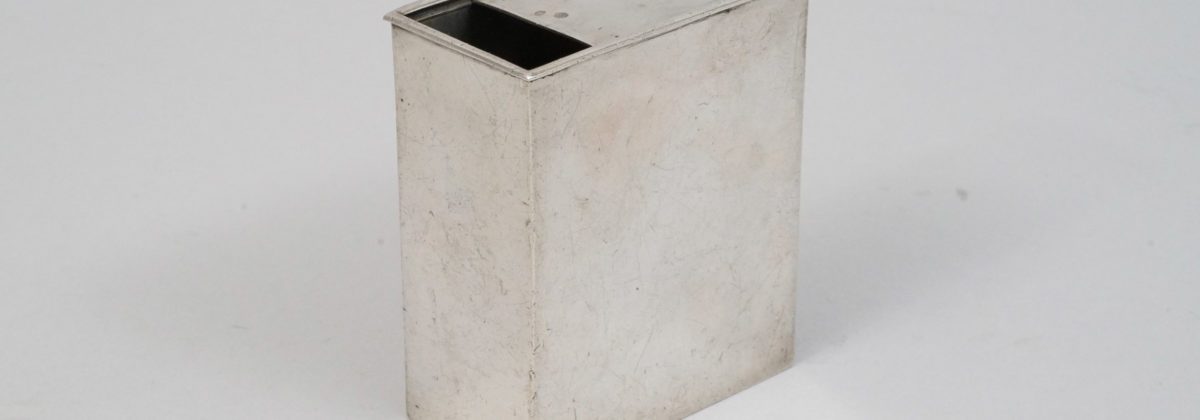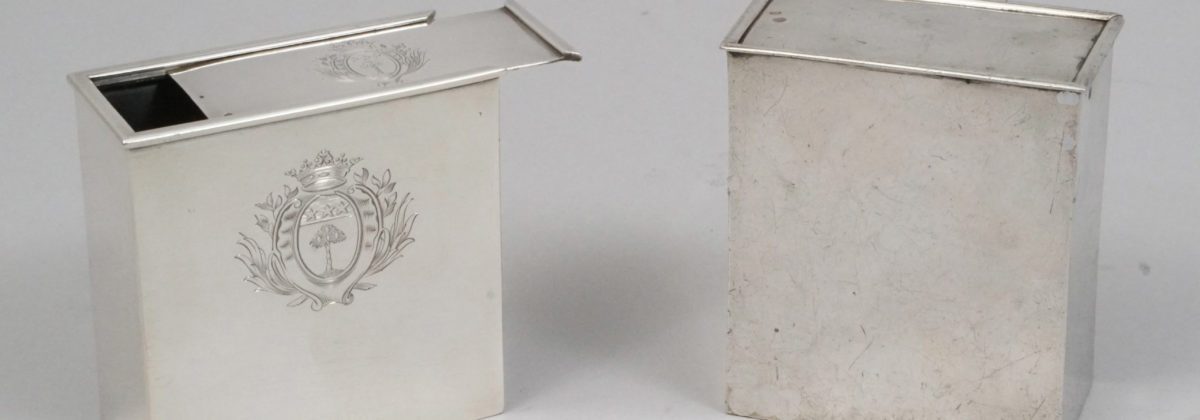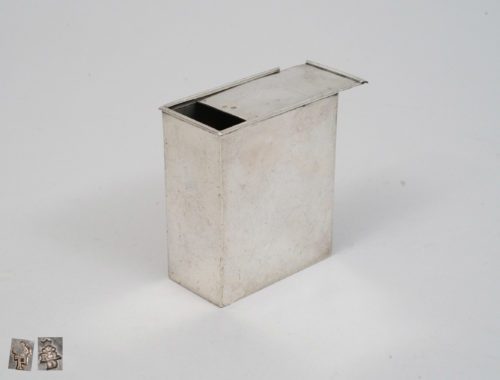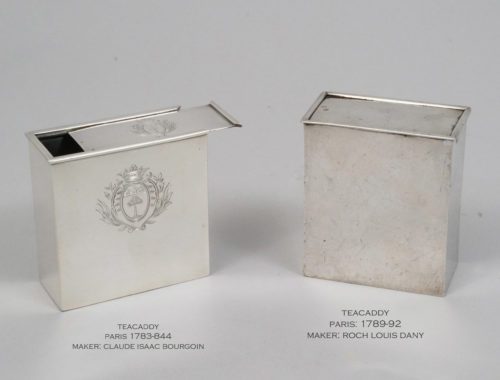Detailed Description
Silver French Tea Caddy
.This tea caddy is a sober and elegant object, left completely smooth. The body is rectangular in shape and the sliding lid (intended for refilling) is flat. Possibly originally part of a travel set.
The hallmarks are on the bottom and under the lid
Tea in Europe
Tea was during the 17thcentury, since circa 1680, imposed in Europe. The great supporters of this hot drink were first of all the statesmen and noblemen of the court, as well as doctors. In France, tea was sold already around 1636, but it became popular under cardinal Mazarin (1602-1661). Its price was always relatively high. It was traditionally drunk with sugar, another expensive condiment of the eighteenth century. The necessity to store tea in a dark and dry place, in order to keep its aroma, has resulted in the development of the closing tea caddy. The tea caddies in England were usually made in sets of two, in order to keep separately the green from the black tea.
The habit of drinking tea had by the early 18thcentury a ceremonial character: the lady of the house prepared the tea in front of her guests. This is one of the reasons why the equipage for tea was made of silver.
.Literatur
Gruber, Al., 1982, Gebrauchssilber des 16. bis 19. Jahrhunderts, Würzburg: Edition Popp





